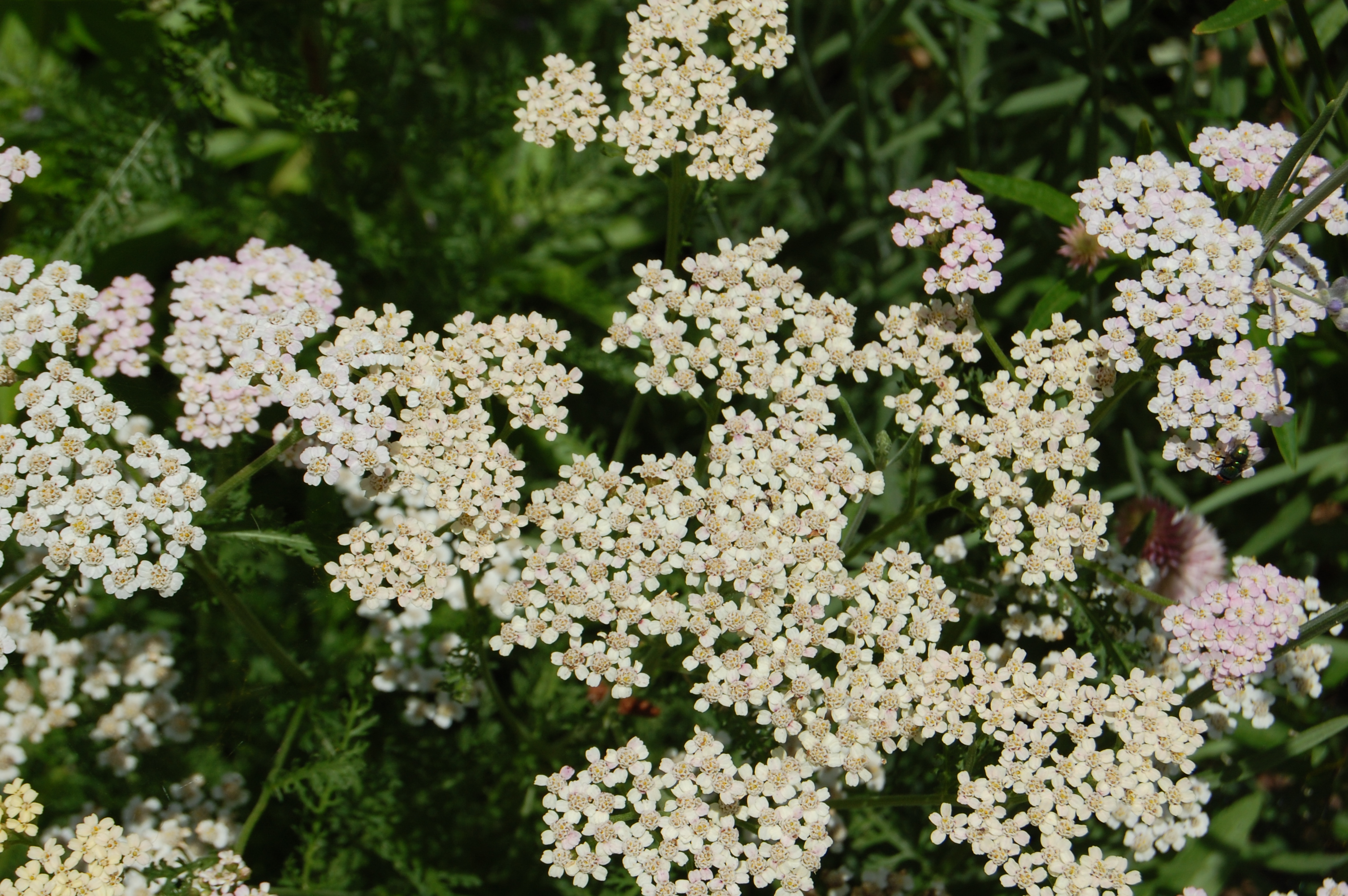Yarrow is an incredibly versatile plant that is grown not just in herb gardens, but also in vegetable gardens to attract beneficial insects, in ornamental borders where its beautiful flowers lend color, airiness and deer resistance, and in xeriscapes thanks to its deep roots which keep the plant hydrated through dry weather. Its flowers can also be dried and used in flower arrangements and crafts or left on the plants for winter interest.
Yarrow (Achillea millefolium) is native to the temperate regions of the northern hemisphere. It is hardy in zones 3-9. Depending on the variety, it grows from 2’ to 4’ tall with flowers that come in red, pink, yellow or white. Again, depending on the variety, it will bloom some time between June and September. If you deadhead it, the plants will send up a second flush of flowers. The leaves are feathery while the flower heads are made up of many tiny flowers lending the plant a look of airiness. Plant them in well-drained soil in a sunny spot. They prefer to be dry.
Yarrow is easy to grow from seed. Just remember that the seeds need light to germinate, so either surface sow them or barely cover them. They will germinate when the temperature reaches at least 65°F and up to 75°F. Yarrow can also be propagated by division. It’s a good idea to divide your plants every two to three years.
So why is yarrow considered an herb? Its nicknames give us some clues. Staunchweed and Soldier’s Woundwort remind us that it was used to stop bleeding from wounds by soldiers on the battlefield and by mothers tending to bloody noses. Called Field Hops, it was used to flavor beer in the middle ages before the use of hops. It was also used to flavor liquors and bitters. During the seventeenth century, the leaves were commonly eaten as a vegetable. Native Americans had many medicinal uses for yarrow although modern science warns that it can produce severe skin rashes. You should exercise caution when handling it. Wearing gloves is a good idea.
Other interesting uses of yarrow include using the dried stalks in IChing divination and its use in the nests of cavity-nesting birds to prevent parasites. It’s not on the menu of deer and rabbits so if you have a problem with them in your yard, plant yarrow to discourage them from nibbling your gardens. Plant it in your vegetable garden where its tiny flowers are beloved by beneficial insects. Plant the white flowered varieties in a moon garden.
The flowers can be dried and used in dried flower arrangements and wreaths, as well as other crafts.
Yarrow is one of the most versatile plants in the landscape. It’s not just beautiful, it’s also useful and drought tolerant. As a native plant, it’s already adapted to your area and will need no coddling.


3 Comments on “Yarrow”
Pingback: Yarrow, a versatile plant | Advice From The Herb LadyAdvice From The Herb Lady
Pingback: Replacing the Rosemary Hedge - Advice From The Herb Lady
If you have the cills, add a little Yarrow to your hot tea. It will make you sweat.